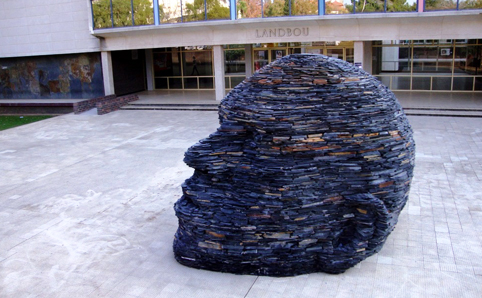Latest News Archive
Please select Category, Year, and then Month to display items
25 March 2024
|
Story Anthony Mthembu
|
Photo Lutendo Mabata
 Prof Nompumelelo Zondi, the newly appointed Vice-Dean: Research and Postgraduate Studies in the Faculty of The Humanities at the University of the Free State (UFS).
Prof Nompumelelo Zondi, the newly appointed Vice-Dean: Research and Postgraduate Studies in the Faculty of The Humanities at the University of the Free State (UFS).
Prof Nompumelelo Zondi has been appointed as Vice-Dean: Research and Postgraduate Studies in the Faculty of The Humanities at the University of the Free State (UFS). Prof Zondi assumed this new role on 1 March 2024 after serving as the Head of Department for African Languages at the University of Pretoria for seven years. “I consider this appointment as an opportunity of growth and learning more about higher education and the Faculty of The Humanities at large,” she said.
Prof Zondi indicates that part of her role is to spearhead the UFS Vision130 within the Faculty of The Humanities, and to ensure that the faculty assists the institution in becoming research-led, student-centred, and globally impactful.
Motivation for assuming this role
One of the primary reasons that led her to consider this role is sharing the knowledge she acquired as part of the Fulbright South African Research Scholar Programme. As a result of that experience and exposure, which went beyond the Ohio State University, she felt it befitting to implement some of the insights she acquired on a bigger scale. Therefore, even though she was impactful in her previous role, Prof Zondi believes that this is an exceptional and more desirable platform to do so. “I feel that I will have easier access to departments within the faculty, while also encouraging and supporting interdepartmental and faculty collaborations,” she explained.
A significant component of Vision 130
He believes that the elements that make up Vision 130 are interrelated. While she considers research central to Vision 130 – as she begins her journey at the UFS, she feels students deserve to be nurtured to further contribute to the university’s impactful research. Thus, student-centredness is the way to go. “I believe that students must be major role players in this Vision130; we must include them in the interactions and discussions that are part of the university’s strategic plan as well as in decision-making processes,” she said. As such, according to Prof Zondi, the more the faculty and the institution care for the students and involve them in Vision130 and in collaborations, the more research outputs the university will achieve.
Ancient methods used for new sculpture
2012-05-11
 |
|
Angus Taylor sculpture “Van Hier tot Daar”
Photo: Supplied
10 May 2012
|
An Angus Taylor sculpture “Van Hier tot Daar” was installed at the Agricultural Building on the Bloemfontein Campus. The sculpture is a three-metre head (14 times larger than life-size) made out of stacked Marico slate. It weighs approximately 15 tons and took two weeks, after months of preparation, to be built on site. The portrait is generic as Taylor has used various people from his studio as reference.
Ms Angela de Jesus, Curator of the Johannes Stegmann Art Gallery on campus, says the process of stacking stone refers to one of the first methods used by humans to create an object or mark a place of significance in three dimensions. The sculpture speaks not only of man’s evolutionary development, but also of how humans are physically and psychologically connected and interdependent on the land. The sculpture that emerges from the ground, although monumental in scale, becomes somewhat of an anti-monument as it is non-representative and it is without a plinth.
The sculpture is the 16th artwork to be installed on the Bloemfontein Campus by the Lotto Sculpture-on-Campus Project funded by the National Lottery Distribution Trust Fund.